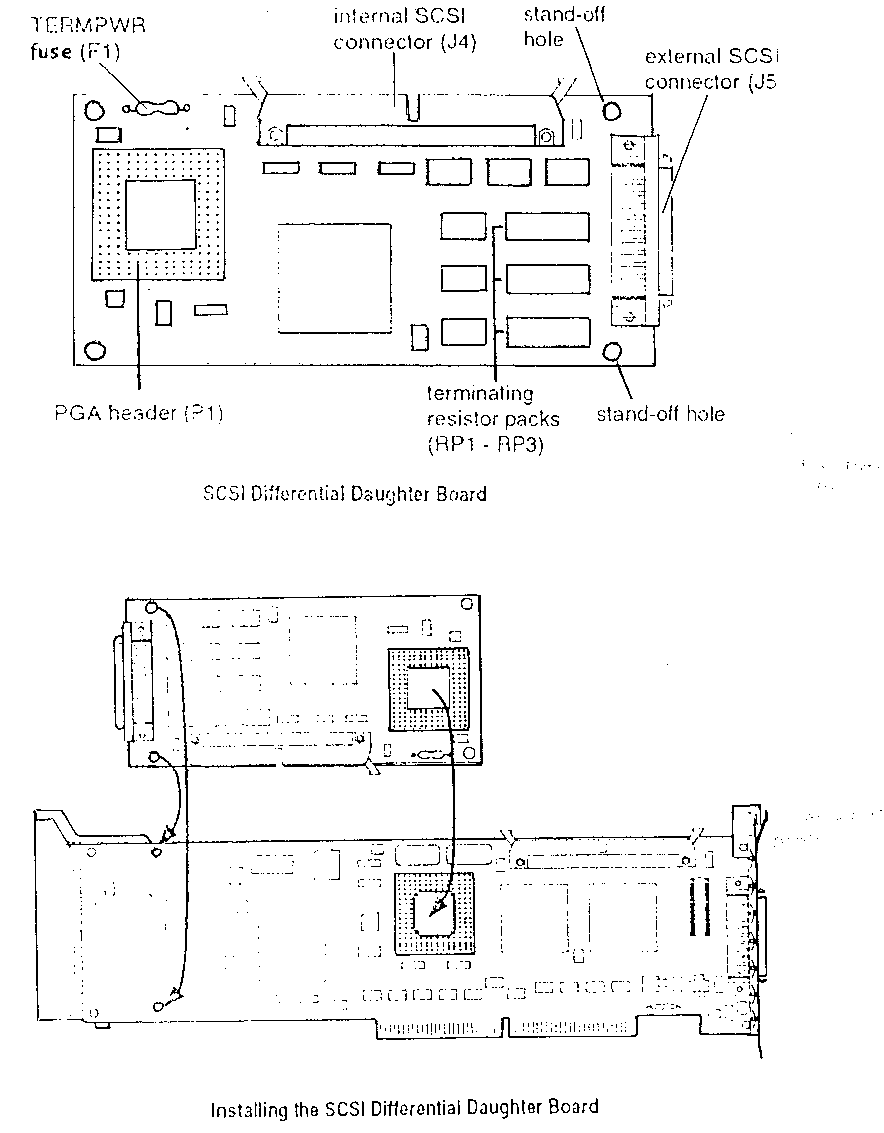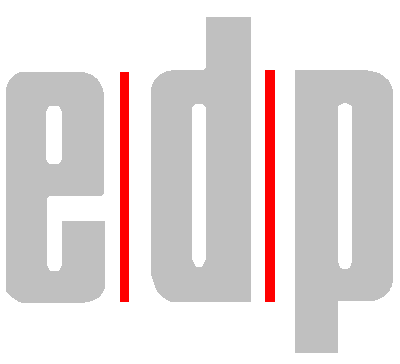- there are no
preventive maintenance routines associated with the SCSI differential
daughter board, and it contains no user-set switches or adjustments.
Any initial errors will be noted by the computer at start-up, and
the board should then be reconfigured using the reference/bios diskette.
If reconfiguration is not successful, a critical failure has occurred
which prohibits further use of the board and requires that the entire
board be replaced. Complete the steps below to service the SCSI
differential daughter board.
- verify that the SCSI differential
daughter board is installed correctly and that there are no damaged
pins. The pga socket and the pga header are keyed to ensure proper
installation. If any pins are damaged, replace the board.
- ensure that no single-ended
devices are attached either internally or externally. The SCSI differential
daughter board only functions properly with SCSI devices that support
a differential bus implementation.
- if
external SCSI devices are attached, ensure that all external cables,
connectors, and jacks are properly connected and in good condition.
In addition, ensure that all external SCSI devices are correctly
daisy-chained, are connected and terminated properly, and have the
proper SCSI ID jumper or switch settings. Refer to your computer
user guide for additional information on SCSI devices.
- if no external SCSI devices
are attached, ensure that SCSI terminating resistor packs are installed
in RP1, RP2, and RP3 or a SCSI terminator plug is connected to the
external SCSI connector J5 on the SCSI differential daughter board.
- if no internal SCSI devices
are attached, ensure that SCSI terminating resistor packs are installed
in RP1, RP2 and RP3.
- check fuse f1 on the SCSI differential
daughter board. If this fuse is blown, termination power (termpwr)
is inadequate, and erratic operation of any or all attached SCSI
devices is probable. If f1 is blown, replace the board. Refer to
the "para 6" for additional information on termpwr.
- if steps 4.2 to 4.7 do not
correct the problem, replace the boar
|
 |

